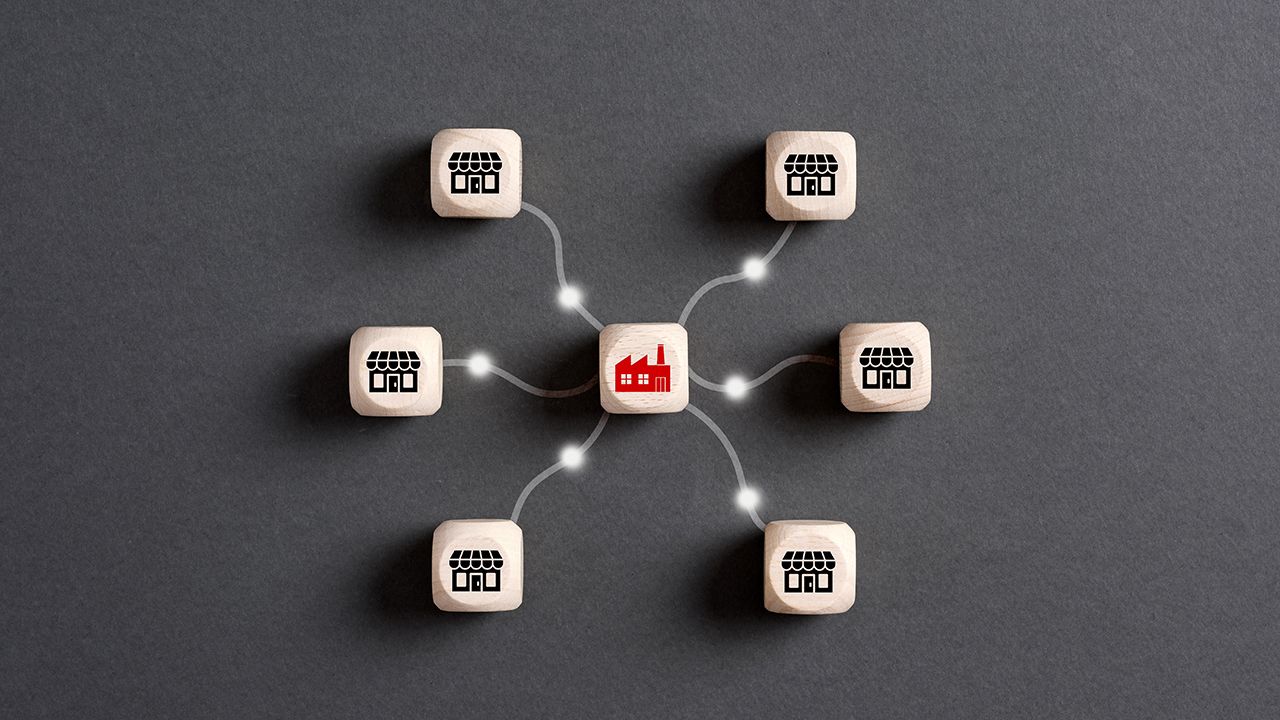Article
Pharmaceutical Technology Europe
Pharmaceutical Technology Europe
The tough road for US pharma
Author(s):
How will the world's dominant pharmaceutical market fare under the new US president?
The US remains the dominant market for pharmaceutical manufacturers as it represents more than 40% of the global market.1,2 A major attraction for pharmaceutical companies is the reluctance of the US government to directly intervene in the market. Although other forces have the effect of regulating prices, pharmaceutical companies can charge higher prices in the US than other key markets, such as Europe and Japan. The US pharmaceutical industry remains fiercely opposed to governmental intervention and has made its views public on a number of occasions, particularly at political level.

Faiz Kermani
During the past 10 years, the US market grew at an average of 15% per year.1 In comparison, Europe has grown at an average of 5% and the Japanese market has only grown by 1.6% annually. The biggest surge in growth for the US pharmaceutical market occurred between 2001 and 2004. Recently, US market growth has slowed considerably; for example, while growth exceeded 8% in 2006, it dropped to 3.8% in 2007. Furthermore, total dispensed prescription volume, which grew at 4.6% in 2006, declined to 2.8% in 2007. This trend appears to be continuing as IMS Health predicts a growth rate of 4–5% during 2008 for the US pharmaceutical market.
The slowdown in the US market has been linked to a number of blockbuster drugs coming off patent, pressure from payers to curb costs, a more cautious attitude from regulators in approving new drugs and the impact of the introduction of Medicare Part D.1 Furthermore, the industry is casting its eyes further afield and looking for new global markets for its products. Socalled emerging markets, such as India, China and Mexico, represent a new growth area for pharmaceutical companies and are growing in prominence.2
While the US market may represent a tougher environment in which to operate in the future, it has not lost any of its allure for pharmaceutical companies. The industry has shown its willingness to fight to maintain its strong position. How it reacts during the coming months will depend much on the new US President, Barack Obama's healthcare policies.
The complexities of US healthcare
The US healthcare system is the most fragmented, complex and most rapidly changing in the industrialized world. It continues to grow tremendously in size and was valued at close to $2 trillion (€1.6 trillion) in 2007.3 Unlike Europe, there is no government sanctioned scheme for providing universal access to healthcare. Instead, insurance and provision are undertaken by both public and private bodies on a limited basis and for limited populations. Employers meet the majority of the massive cost of healthcare in the US. It is estimated that benefits, of which healthcare provision is the major part, account for more than one third of employers' payroll costs.2
Employers either carry the risk for covering employee's sickness benefits themselves, or use an insurer or managed care plan. Where employers carry their own risks, they often use the services of an insurer or managed carer to administer inhouse schemes. Managed care plans are very well accepted among large employers, few of whom now use traditional indemnity insurers, but there is less penetration among small employers, among selffunding individuals or in the two public schemes. The two major public schemes, Medicaid and Medicare, act as safety nets for those who are unable to fund their healthcare through any other means.

Table 1
In most cases, people are eligible for Medicare if they or their spouse have worked for at least 10 years in Medicare covered employment, are 65 years or older and a citizen or permanent resident of the US. People are eligible for Medicare when they turn 65 even if they are not eligible for social security retirement benefits. Medicare is divided into four parts, each relating to different aspects of healthcare services (Table 1).
Medicaid is another programme that is occasionally confused with Medicare by those less familiar with the US healthcare system. Medicaid is a staterun programme that provides hospital and medical coverage for people with low income and little or no resources. Each state has its own rules about who is eligible and what is covered under Medicaid.
The high price of medicines has become a contentious issue in recent years, with many consumers calling on their political representatives to make healthcare more affordable. The cost of healthcare is a major issue at election time. The continuing high price of medicines in the US has resulted in price conscious individuals and employers seeking strategies to obtain cheaper products.
Price insensitivity on the part of the US consumer had been considered to be one reason for the dramatic rise in prices seen during recent years. However, patients now have to pay a greater portion for these charges for medicines and are becoming more aware of the pricing element of pharmaceutical company marketing strategies.2 It is well known that consumer spending for prescription drugs tends to increase with age. Unsurprisingly, many US seniors have criticized the high prices that they currently pay for prescription drugs and have been looking to politicians to help drive down costs.
In the lead up to the 2008 US elections, the Republican candidate, John McCain, portrayed himself as willing to put pressure the pharmaceutical industry concerning its pricing, which included measures to let consumers import cheaper medicines from Canada. While this type of approach found favour with the public, pharmaceutical companies responded by increasing their donations to the Democratic campaign. According to figures from the Center for Responsive Politics, Barak Obama's campaign received $450094 (€357160) to John McCain's $132575 (€105201) by the end of August 2008.4,5 Interestingly, however, the Democratic campaign was highly critical of the pharmaceutical industry regarding its pricing strategies.
Pharmaceutical industry lobbying
The pharmaceutical industry's strong position has much to do with its political lobbying power. Most US pharmaceutical companies are members of the Pharmaceutical Research and Manufacturers of America (PhRMA), which lobbies at the highest level on behalf of its members, both in the US and abroad. PhRMA members are responsible for approximately 80% of the total R&D efforts of the pharmaceutical industry.2
According to industry critics, PhRMA's tremendous political power has allowed companies to fight back against price restraints, and measures to promote generics and parallel trade. Historically, PhRMA's views have been closer to the Republicans than to the Democrats, but in recent elections, representatives from both parties have been critical of some industry activities.
A noticeable increase in lobbying was highlighted by critics of PhRMA, following the political shift in congress from Republican to Democratic control. This has been linked to several industry critics in the Democratic party taking up roles in committees with the power to push for greater industry oversight. PhRMA is estimated to have spent approximately US$23 million (€18.3 million) in lobbying during 2007, a 26% rise from 2006.6 According to reports in the Houston Chronicle, PhRMA spent $12 million (€9.5 million) in the second half of 2007.6 Lobbying measures included those against a bill to allow the federal government to negotiate prices directly with pharmaceutical companies under the Medicare prescription drug benefit, and legislation that would allow the purchase of lower cost medications from Canada and other countries. However, congress did not pass either of these bills. PhRMA also lobbied against certain measures of a prescription drug safety bill, which became law in September 2007. Industry critics noted that this bill did not include restrictions on direct to consumer advertisements, which had been opposed by the pharmaceutical industry.
A new political era
According to an October 2008 Boston Consulting Group (BCG) analysis, the new US Presidency may cause the industry a number of difficulties.7 President Obama's healthcare plan, published during the election, struck a highly populist tone and contained language that was far from friendly to the pharmaceutical industry.8 One of his main proposals was to let the US Federal government negotiate Medicare drug prices. This would overturn the elements of the 2003 Medicare Prescription Drug Improvement and Modernization Act, which actually banned the government from negotiating down the prices of prescription drugs.8 It was suggested that this change in policy could result in healthcare savings of up to $30 billion (€23.8 billion). Such a move would be unpopular with the pharmaceutical industry as it would have a major impact on earnings.7
Another area that President Obama wishes to tackle is generics. His election healthcare proposal accused certain pharmaceutical companies of paying generics manufacturers to stay out of the market, thereby enabling them to maintain a monopoly. In response, he expressed a desire to increase the use of generics in programmes such as Medicare and Medicaid.8 However, what will be of greater concern to pharmaceutical companies are his intended policies for biogenerics. In the lead up to the 2008 election, Obama's advisors issued statements at the Annual Policy Conference of the Generic Pharmaceutical Association that their candidate supported generics and biogenerics legislation. President Obama's then cited position was to support as short a market exclusivity period as possible to get affordable biogenerics to market. This would be in direct contrast to that of the pharmaceutical industry and its biotech allies, which have reportedly been pushing for up to a 14-year exclusivity period.

The author says...
Outlook
No one can be sure exactly how the US political environment will unfold with respect to healthcare during the next few years, but it is likely to feature measures that pharmaceutical companies will find unpalatable. However, the position taken by President Obama during the election reflected the trend of growing public dissatisfaction with pharmaceutical companies and the state of the healthcare system. The pharmaceutical industry will continue to lobby politicians to supports its views, and may even win some powerful new friends to its cause, but it needs to urgently address other areas, such as public attitudes to its activities. If it cannot reform itself and prove to the public that its current commercial approach is justified for the development of new medicines then future political leaders are likely to view it as an easy target to gain votes.
References
1. IMS Health Inc., "IMS Health Reports US Prescription Sales Grew 3.8 Percent in 2007, to $286.5 Billion" (2007). www.imshealth.com
2. National Coalition on Health Care, "Health Insurance Costs. National Coalition on Health Care" (2008). www.nchc.org
3. F. Kermani, Pharmaceutical Distribution in the United States (Urch Publishing, London, UK, 2008).
4. J. Ledbetter, Slate (August, 2008).
5. J. Blum, Bloomberg.com (August, 2008).
6. Medical news Today, "PhRMA Spent $22M Lobbying Congress In 2007. Medical News Today" (2008). www.medicalnewstoday.com
7. V. Fuhrmans, The Wall Street Journal (2008). http://blogs.wsj.com
8. "Barack Obama and Joe Biden's plan to lower health care costs and ensure affordable, accessible health coverage for all" (2008). www.barackobama.com
9. Pharmacy Choice, "Senior Advisors to Presidential Candidates John McCain and Barack Obama Affirm Support for Increased Access to Generic Medicines and Creation of an FDA Approval Pathway for Biogenerics" (2008). www.pharmacychoice.com
Newsletter
Get the essential updates shaping the future of pharma manufacturing and compliance—subscribe today to Pharmaceutical Technology and never miss a breakthrough.






